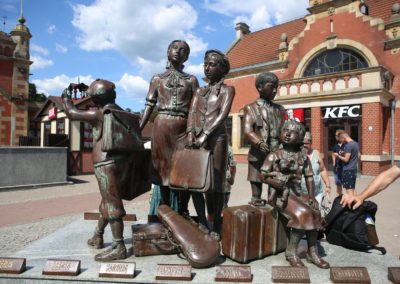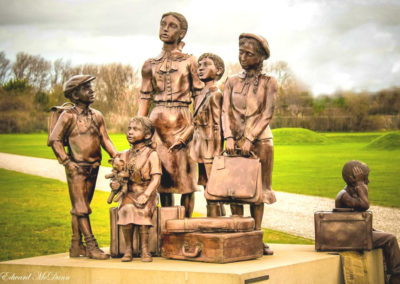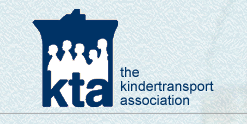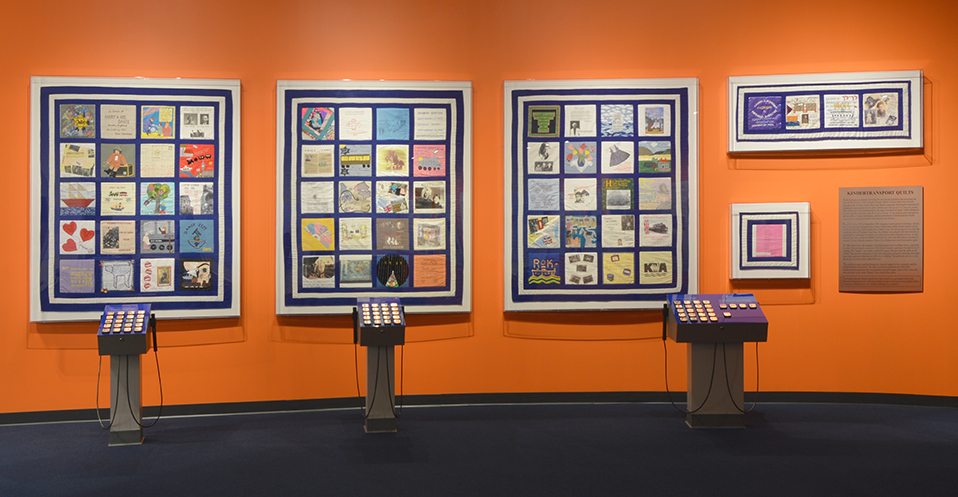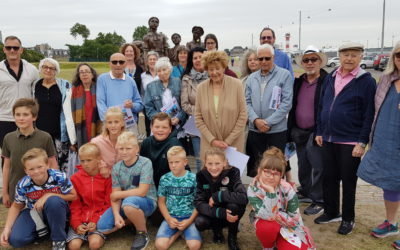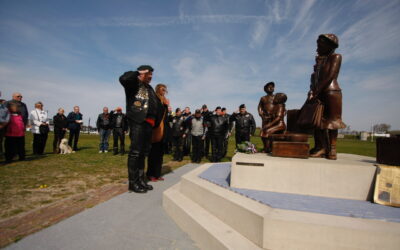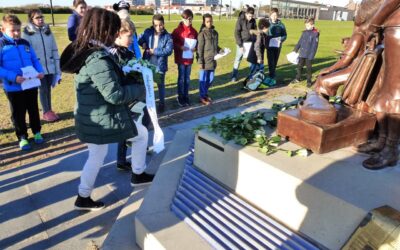Transfer in Hook of Holland
The children left Gdansk, Berlin, Vienna, Hamburg and Prague by train. Their final destination: London. Because of the fact that German port cities were closed off for the Kindertransporten, the children travelled through the Netherlands, in most cases through Hook of Holland. They arrived at the train station there, from which they walked with their carry-on luggage to the quay. There, the steamer that would bring them to Harwich lay waiting. From there on, they continued their journey by train to Liverpool Street Station in London.


Onderweg naar Liverpool
The memory remains
To keep the memory of the Kindertransporten alive, memorials were placed at important points along the children’s route to safety. Especially at the train stations of Gdansk, Berlin and London. These monuments were made by the German artist Frank Meisler, who himself was one of the children that escaped the nazi terror thanks to the Kindertransport rescue movement.
In November 2011, a similar memorial was unveiled in Hook of Holland. Also, a lot of films have been made about the legendary Kindertransporten. And people who have experienced them first hand, can join an association that is dedicated to the memory of these transports.
Kindertransporten
In the period that led up to the Second World War, Jewish people had a very rough time.
Especially since the Kristallnacht (the Night of Broken Glass, November 9-10, 1938) when the anti-Semitic pogrom began. Luckily, negotiators succeeded, after lengthy debates, in getting the so-called Kindertransporten going. Because of these transports, no less than 10.000 Jewish children found a safe haven in England.
Negotiations
The negotiators spoke, among others, with Adolf Eichman, a nazi, and with the British Prime Minister Chamberlain. One of these negotiators was a Dutch banker’s wife, named Geertruida Wijsmuller-Meijer.
Eventually, a bill was passed that made it possible for England to take in Jewish children as refugees.
10.000 children are safe
On December 1, 1938, the first transport left from Berlin. On December 10, 1938, the second left from Vienna. After the German occupation of Czechoslovakia (March 1939) transports were arranged from Prague as well. In February and August 1939, transports from Poland followed. The last transport left on September 1, 1939 from Germany. Two days later, on September 3, 1939, England declared war on Germany.
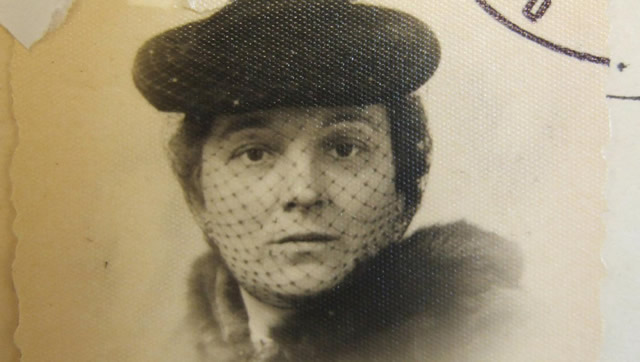
Geertruida Wijsmuller-Meijer
British terms
The British only allowed children under the age of 17 to enter their country, and on the condition that they were unaccompanied by their parents. The costs of the journey and accommodation of the children was estimated at 50 pounds per child (in 2012 this would be approximately 1500 euros). This money was raised by the Jewish community in England.
Nazi terms
The children weren’t allowed to bring much: one suitcase, one bag, 10 Reichsmark and the odd picture. Toys and books were not allowed. Valuable goods would be immediately confiscated. Their families weren’t allowed to say goodbye to the children at the train station. They had to say their goodbyes at home or elsewhere.
The names of the children were put on a list and every child received a number that was hung around their necks. En route, the list of names and the children were inspected regularly, which caused much delay.
10.000 children are safe
On December 1, 1938, the first transport left from Berlin. On December 10, 1938, the second left from Vienna. After the German occupation of Czechoslovakia (March 1939) transports were arranged from Prague as well. In February and August 1939, transports from Poland followed. The last transport left on September 1, 1939 from Germany. Two days later, on September 3, 1939, England declared war on Germany.
Monuments
At several points along the route of the Kindertransporten, monuments were erected. These monuments were made by Frank Meisler, who was born in Gdansk (Poland) and who experienced the transports first hand when he was a child.
The Departure
Station Gdansk
Trains to Life, Trains to Death
Station Friedrichstrasse in Berlin
The Arrival
Station Liverpool Street in London
The Final Parting
Station Damtor Hamburg
Channel Crossing To Life
Waterwegpark Hoek van Holland
KTA – Kindertransport Association
An organisation that is dedicated to keeping the memory of the Kindertransporten alive is the Kindertranport Association.
More information available at kindertransport.org
On the site of KTA you will also find a link to the CHILDREN TRANSPORT Memory Quilts. Those Quilts were “made by 64 of the Kinder”.
Child Transport Memory Quilts
A Quilt is a piece of handicraft with the name of the child and an image of the journey to freedom. Under each Quilt you will see a button with a sound clip in which he or she tells about it. Try it and then play the Quiz.
Movies
In the Arms of Strangers
Many films, recent ones as well, have been made about the Kindertransporten.
One of these films, Into the arms of Strangers (2002), received an Academy Award (Oscar) in the documentaries category. The film contains a lot of authentic footage, among others of the transfer in Hook of Holland, and interviews with seniors who experienced the transports first hand.
Trailer In the Arms of Strangers
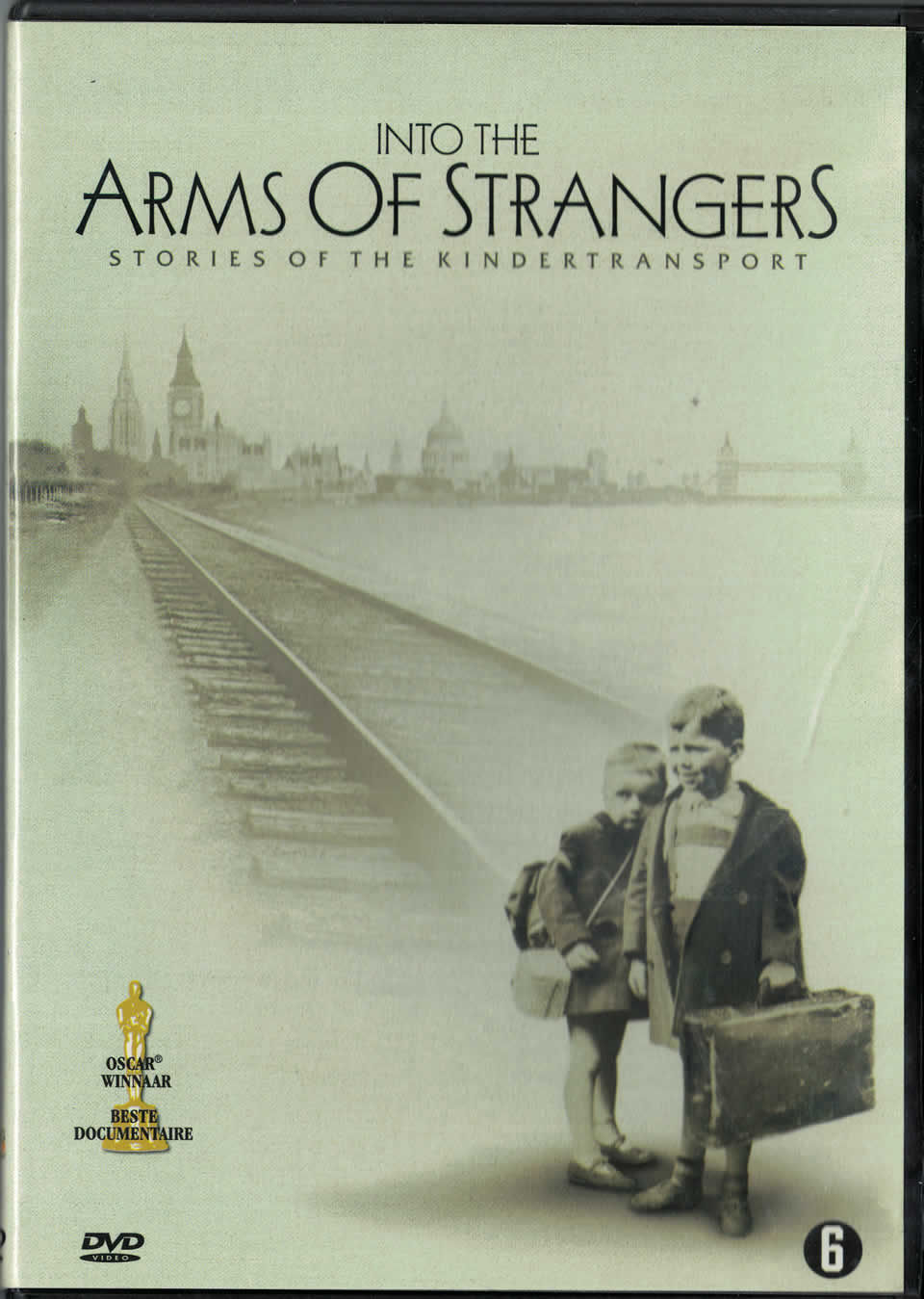
Visit the website Into the arms of strangers.
Truus’ Children
Another recent film: Truus’ Children, a documentary by Dutch filmmakers Pamela Stuurhoofd and Jessica van Tijn about Truus Wijsmuller, the force behind the Kindertransporten.
Visit the website truus-children.com
Trailer Truus’ Children
Hook of Holland
Memorial
Hook of Holland
Hook of Holland was a very important place for the Kindertransporten. It was here that the children boarded the ship that would take them to England. On the other side of the sea, they would be safe.
This was imprinted into their memories.
That is why on November 30, 2011, a monument was unveiled in Hook of Holland: Channel Crossing To Life.
Memorial in the media
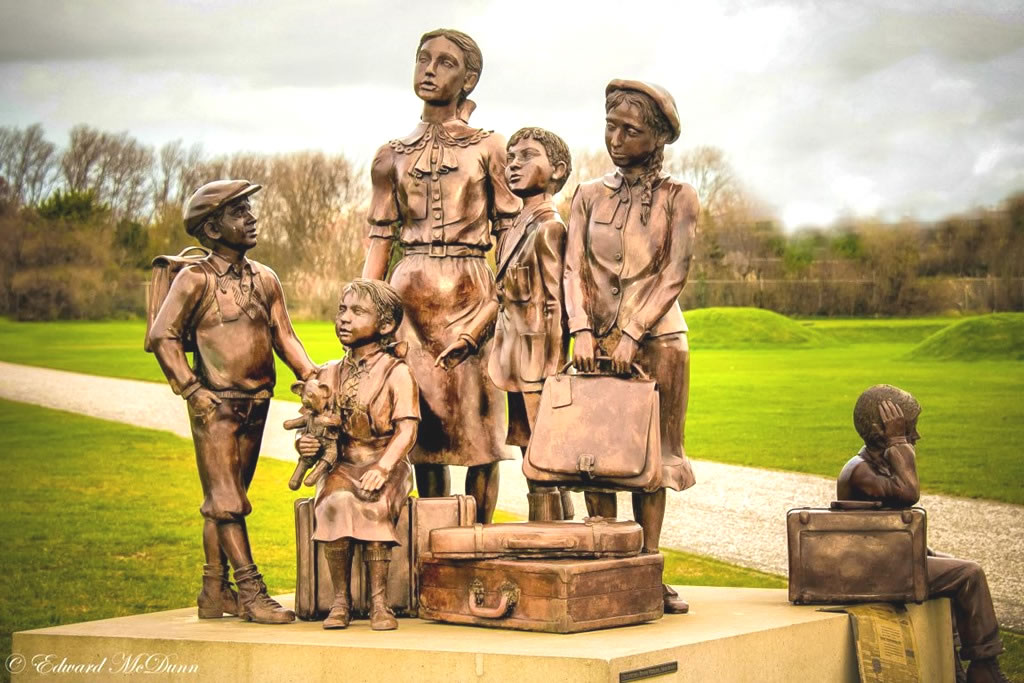
Broadcast Dutch Youth Journal
Broadcast WOS – November 30 2021
Broadcast WOS TV
Broadcast NPO 1
Broadcast RTV Rijnmond
Primary education
An impression of the journey to England and the transfer in Hoek van Holland.
Click here to download the print version of the animation.
Witnesses
A Poem following a conversation with Mrs. Miep van Vugt.
In 1939 she was a 15-year-old witness of the child transports.
Transport
(1 september 1939)
A glimpse we caught
of children over there, far away
– distant also from what people told us and kept quiet-,
on route to the Great Unknown
– but familiar, in a way, and free, as they told us-,
through here, the end of the line.
Crossing, crossing the gangway,
a suitcase, a bag, ten Marks,
the odd picture, a number around their necks;
a painful gaze toward the East, a hopeful one toward the West.
‘Das grosze Meer, da hinten die Sicherheit,
wie Vati und Mutti sagten.’
A glimpse father caught one day.
‘What I saw there, I’ve never seen before,
a flat railway carriage loaded with cribs,
one baby merely two weeks old!
Over there, far away, through here,
to there, far away, but safe.
No longer a glimpse
– when broken pieces of that night,
one year before, cut even deeper –
of children with numbers around their necks.
Later on we did hear rumours:
transports to the East
and stars on their chests.
All promises faded, pleas silent, hope gone
of reuniting with their children.
No sea, no hope, no crossing,
at the end of this line.
Ed van Berkel
(translating Annemarijn Ferweda)
Activities at the monument
The monument has been adopted by OBS Inova.
Often the students of this school participate in the activities.
About this site
This site was developed by Karin van Paassen, Ed van Berkel and Mirjam Visser. The comic was drawn by Ton Willemsen.
Concept and story: Ed van Berkel (EdCom) www.edcomhvh.org
Research: Mirjam Visser
Hoek van Holland rond de Tweede Wereldoorlog
The second version of this site was realized with a financial contribution from the Hoek van Holland Area Committee (Residents Initiative).
More information:
Ed van Berkel
Bonte Craystraat 33
3151 RB Hoek van Holland
0174 385298
edvanberkel@hetnet.nl


